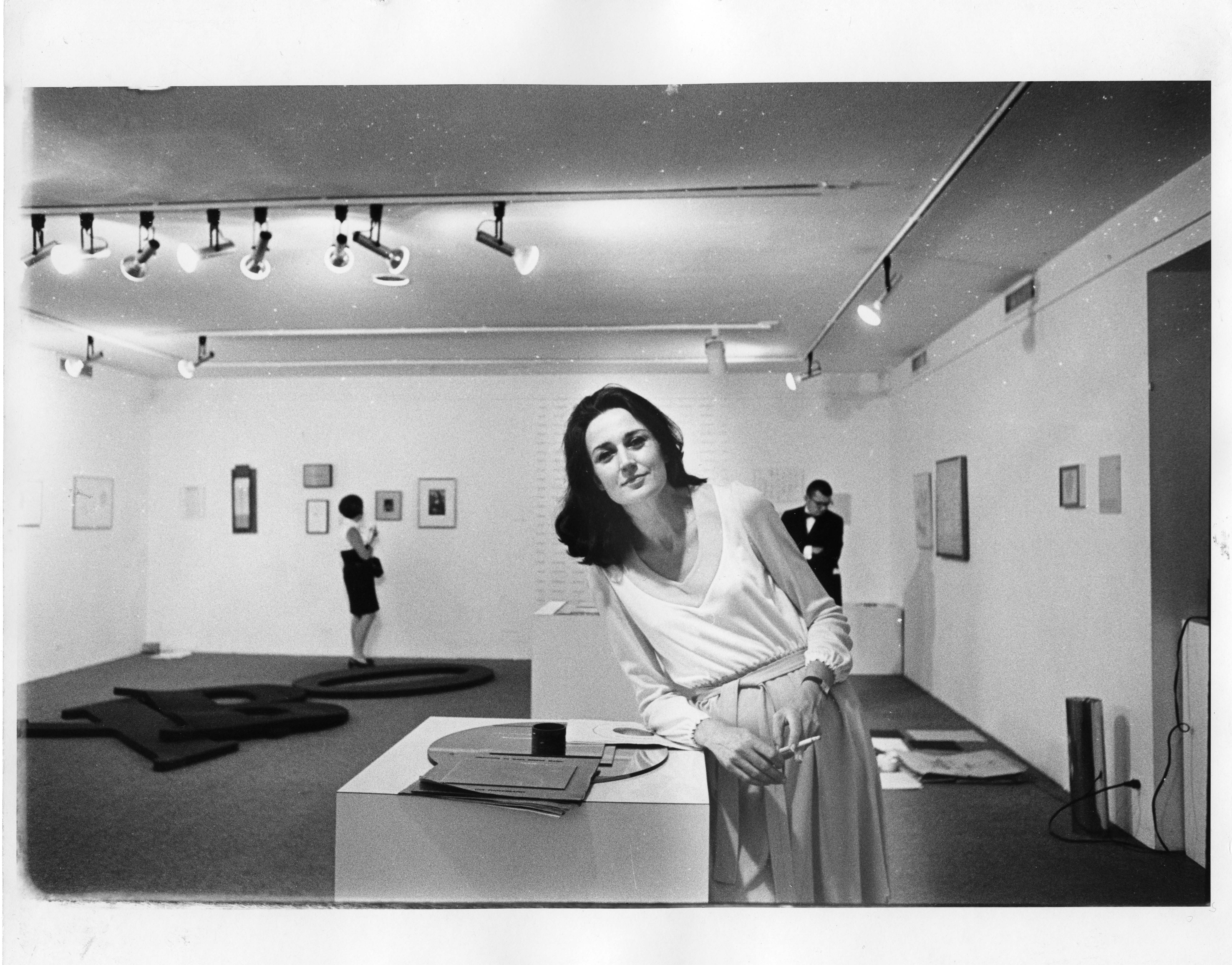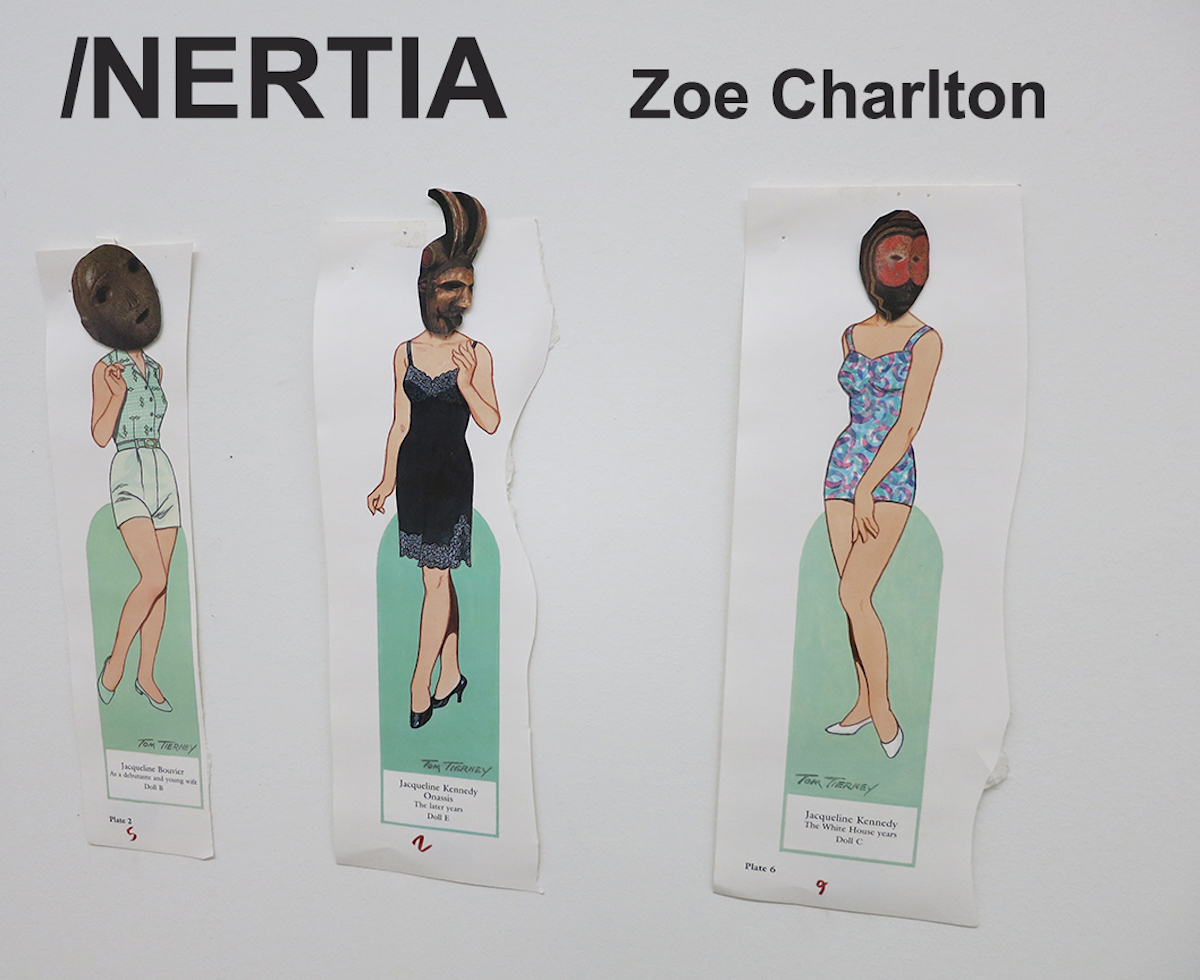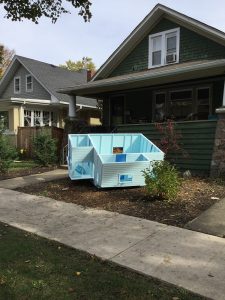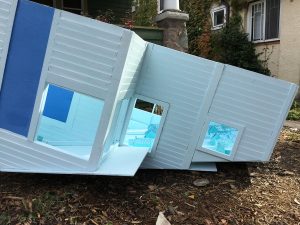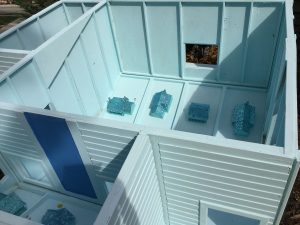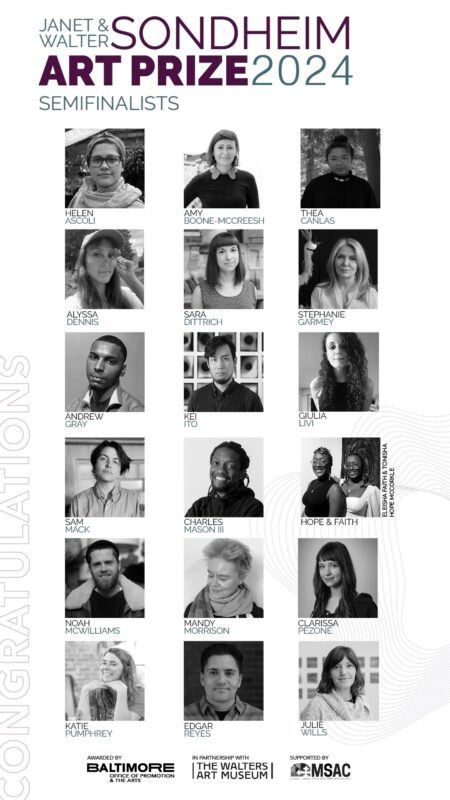A Studio Visit with Mixed Media Artist Zoë Charlton by Amy Boone-McCreesh
Zoë Charlton is a well-known fixture in the Baltimore and DC art scenes, though before our studio visit she and I had only interacted as acquaintances. The artist invited me to her DC studio near American University, where she is an Associate Professor of Art and currently serves as the Art Department Chair.
Charlton and I found we share an esoteric history, with both of us having spent time in remote Limestone, Maine, at the now-closed Loring Air Force Base. She also shared her best practices for the studio and a love of Sci-Fi movies and TV.
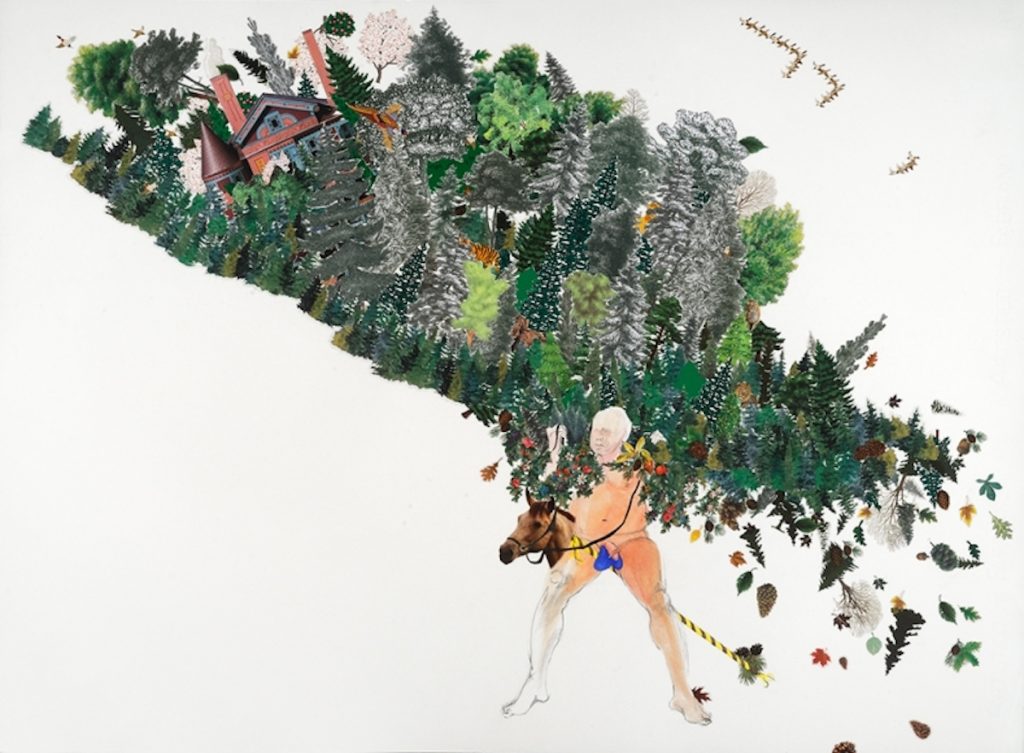 Fort Mose, 2012, collage and gouache on paper, 22 x 30 inches.
Fort Mose, 2012, collage and gouache on paper, 22 x 30 inches.
Photo credit Greg Staley
This conversations was taken from an interview on November 17, 2016 in Washington, DC.
Where did you grow up?
I was a military dependent so I didn’t really grow up in one specific place. The most amount of time that I lived somewhere growing up was northern Maine in Aroostook county. We were at Loring air force base for five or six years and I went to high school in Limestone.
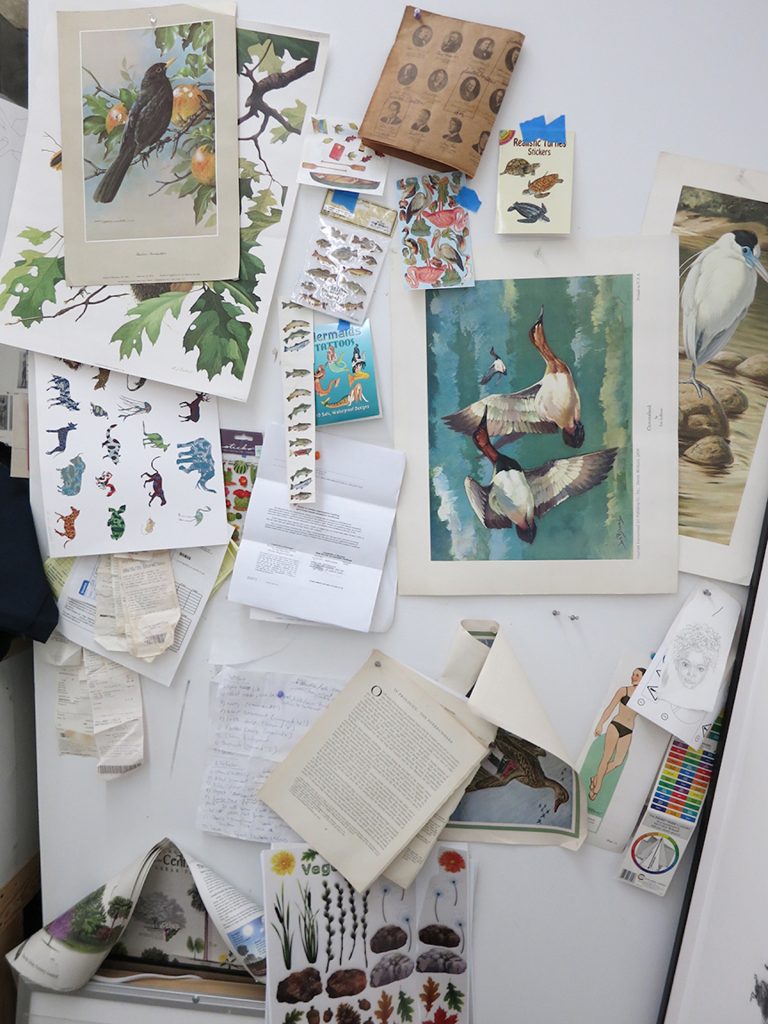
I was born in Florida. My family moved from there to Japan, to California, Maine, Georgia then back to Florida. My twin brother and I were four or five years old when we lived in Japan. I do remember the landscape, some people that my parents knew… the cartoons. Some of my earliest memories are of those cartoons. I still look at them and I’m influenced by the way they’re drawn. Also, there are two landscapes that I really like, one is a New England landscape and the other is a really dense southern landscape, which is really beautiful and full of plants like Kudzu. They are two distinct places that I really gravitate towards.
What is the driving force behind your work?
I’m really interested in perceptions of power. How a body translates that through the objects it is wearing (or carrying) contributes to its relationship to power, history, or identity.
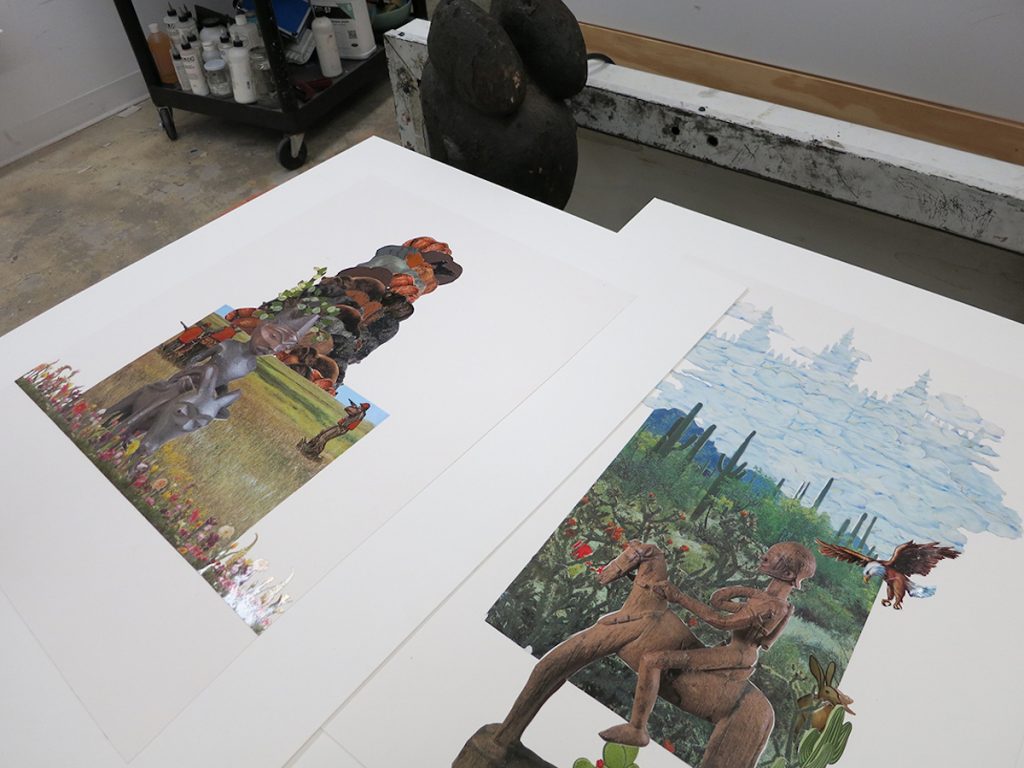
What is your biggest struggle in the studio?
Time. A lot of my time is taken up by my job responsibilities. Outside of that my biggest struggle is focus because I have a lot of things going on in the studio at once. I have a glitter drawing series, and a series of drawings that I do with models. I have one model that comes up from Alabama, and another one from Baltimore. We worked consistently for three or four months but then my schedule changed this summer.
There are certain things that I need to work on from life and some that can be from photographs. I very rarely edit myself in the studio, I tend to just work and see what happens and later I can figure out the connections. Sometimes I talk about trying to be consistent but I think it is important to acknowledge impulses as well.

Put the following terms in order of importance to your studio practice: Form, Concept, Process.
Concept, then form, then I deal with process. My ideas are always first. Then I figure out what form it’s going to take or what material I am going to use. Sometimes I don’t know how to use the material that I think would be best for that idea.
I figure out the methodologies or processes to be able to accomplish those things. That might mean stepping back for a few months to become more facile with a technique or I might need to find someone else that can do it, or I might need to spend a few months making the object. It’s really straight-forward for me. I am used to coming into the studio and making, so I try not to get too bogged down by the process until it’s time. Content and concepts come first.

Was there ever a time when you felt like you couldn’t keep making work? If so, what helped you to keep going?
This question makes me think about specific instances in my life that have kept me from working; they have all had to do with physical challenges. I’ve had things in my life that distracted me, though I am always thinking about studio work even if I can’t actually do it. The last few years have been really challenging in terms of shifts in family, etc. That would have kept me from working (in the studio), but because of daily job and studio obligations, accountability is built into what I do.
Because I work with a lot of people, they know what I am doing. Artist friends ask me what I’m working on- I respond well to having to be accountable. People are always coming into the studio. It’s easy to be really distracted, there’s a lot of stuff going on in the world. Sometimes I have to talk myself into a working, though.
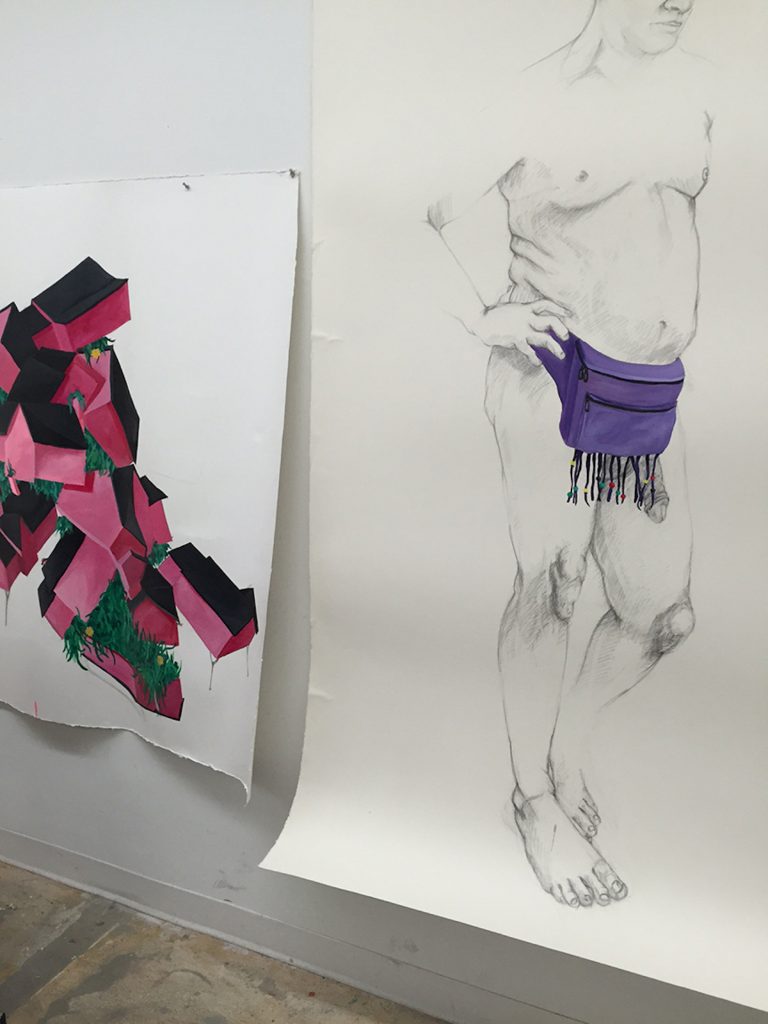
Do you have any routines, rituals, or coping mechanisms that you use regularly in your studio practice?
If I am spending a whole day in the studio, I block it off into four hour increments. I have been keeping this kind of schedule for about ten years. I realized my attention span only lasts that long. Because I am drawing, it hurts my body to be in a strange position for too long.
When it’s time for lunch I will watch Hulu, or some Sci-Fi and then I get back to work. Right now I am watching Shadow Hunters. I’m obsessed. When I’m here (in the studio), I’m here for a reason. What’s annoying is when I come in and something is absolutely not working or I’m distracted and I end up hanging out and just looking.
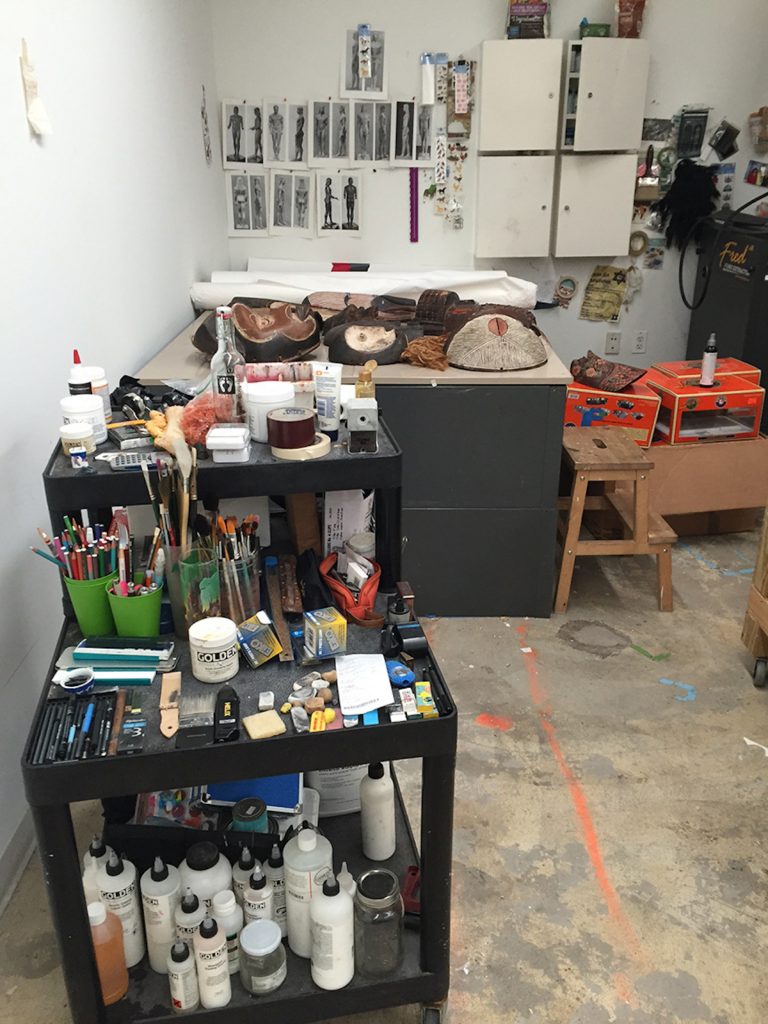
Do you have any hobbies or interest outside of your studio practice that help keep you sane?
I like watching Sci-Fi films. I listen to a bunch of crazy podcasts; I like The Read and Another Round a lot, they are fantastic. Occasionally I go to the gym. I cook a lot because I like to eat. I have a group of folks I love to hang out with. I like long distance driving!
If you had to describe your life to someone out of the arts, how would you do that?
When my husband and I lived in Springfield, Missouri, I thought my neighbors had no real idea what I did, because I taught part-time and would come home and disappear into the garage for hours at a time. I thought about how I would explain this to them. I would tell them that I’m in the Artist Protection Program. From the outside, people think I have an insane schedule. I have a really art filled life.
The easiest thing for me to say is that I teach, and that I am an artist that makes drawings of people. It sounds boring, but it isn’t. I tend to go the route of very practical when explaining my life. When you just say you’re an artist, it doesn’t really tell anyone anything other than you make art. It doesn’t say anything about your schedule. I believe people think it means you have a lot of time on your hands.
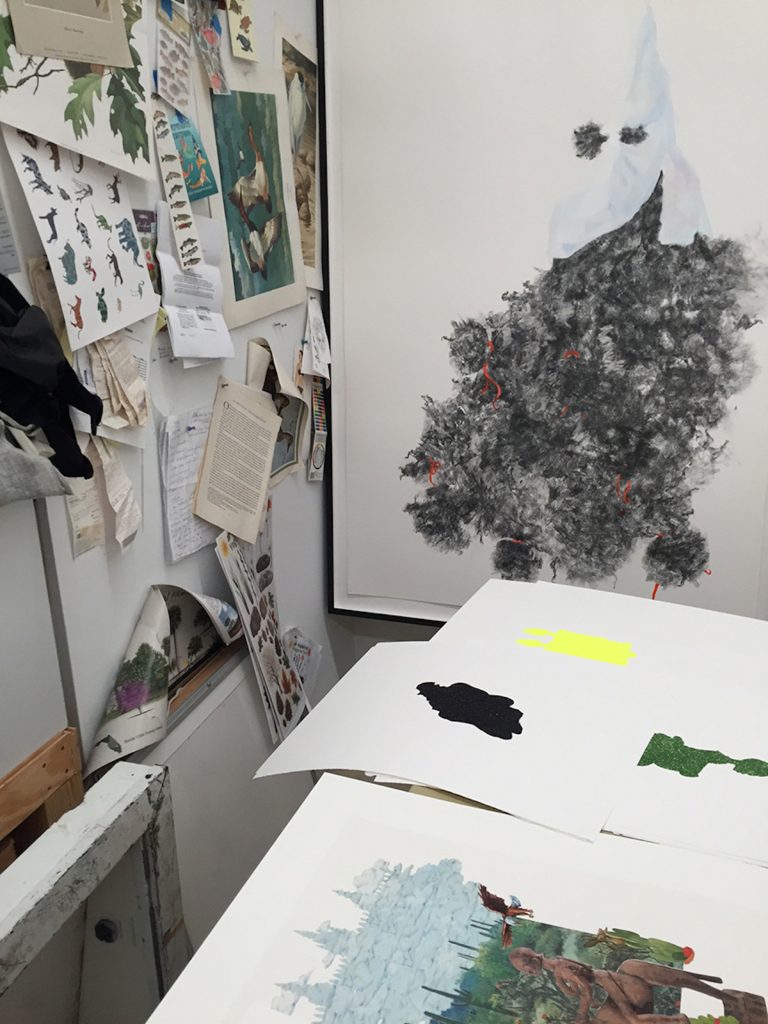
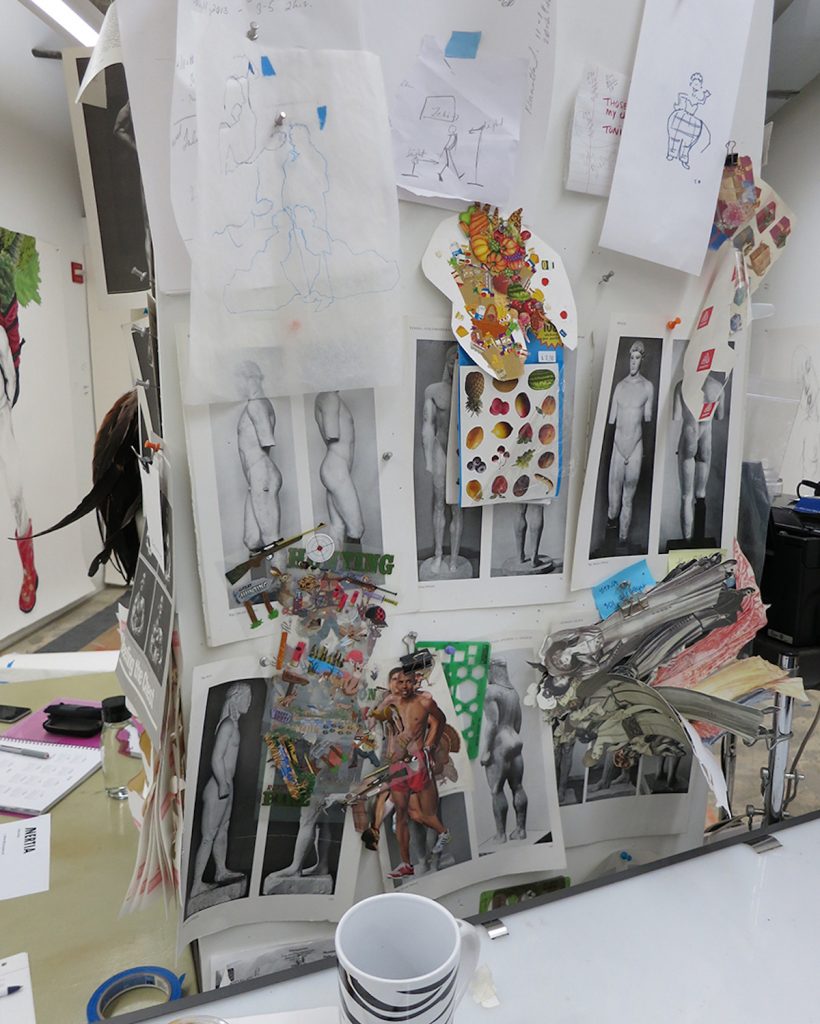
Do you think the internet is helping or hurting us as artists and people?
I think it’s helping! I love the internet. I am a little frustrated about the ads on websites and the specific targeting in that way. Though, I felt before the internet that my life was mine, there was something really wonderful about not having everything you are doing reported and to not have the impulse to even need to document what you are doing.
I think the internet is a really helpful tool, though. I use it as a resource and a form of entertainment. Of course, our experiences on the internet are somewhat curated, but I think there is still a way to creatively discover. I’m not completely glued to my internet experience. When all experiences are digital, you do lose some kind of human connection. There’s something about being in someone else’s physical space that is really beautiful. That’s why I like working with people in my studio.
Is there anything you would like to promote? Upcoming exhibitions, projects, passions?
I have a solo project called I Live on Paul Russell Road up at Terrain in Oak Park, IL until December 11. Terrain is an outdoor space run by Sabrina Ott, in the front of her house. She invited me to make a sculpture. I don’t make sculpture, but I thought this would be an interesting opportunity. I have been wanting to build a replica of my grandmother’s house for a long time. It’s her house turned upside down and has little suburban houses covered in glitter in the belly of the house.
The other project is ‘sindikit, an art project space that I opened this year with my collegue Tim Doud, (supported by the Grit Fund and the Robert W. Deutsch Foundation). The current project is Miller & Shellabarger from Chicago. Jeannie Simms is in the adjoining space. On December 2, Bobby English comes back to Baltimore to perform at ‘sindikit. There will also be a closing performance for the Miller & Shellabarger project on December 10.
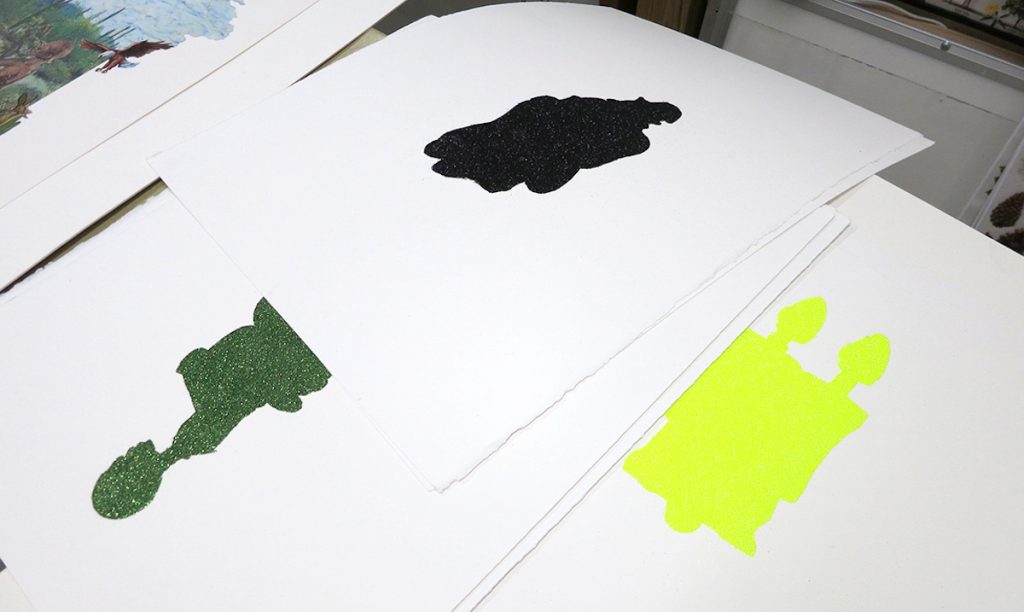
*******

Keep Going: Inertia is a monthly studio visit blog series that aims to make use of a consistent model and series of questions for visual artists. The content of the studio visits will highlight the struggles of a regular studio practice and the drive to keep working. National and International artists are to be featured to examine different approaches to working as a contemporary artist. Inertia will deliver the content through a compact and easily consumable format, allowing visitors to engage regularly and reliably.
Author Amy Boone-McCreesh is a Baltimore-based artist, writer, and professor.
